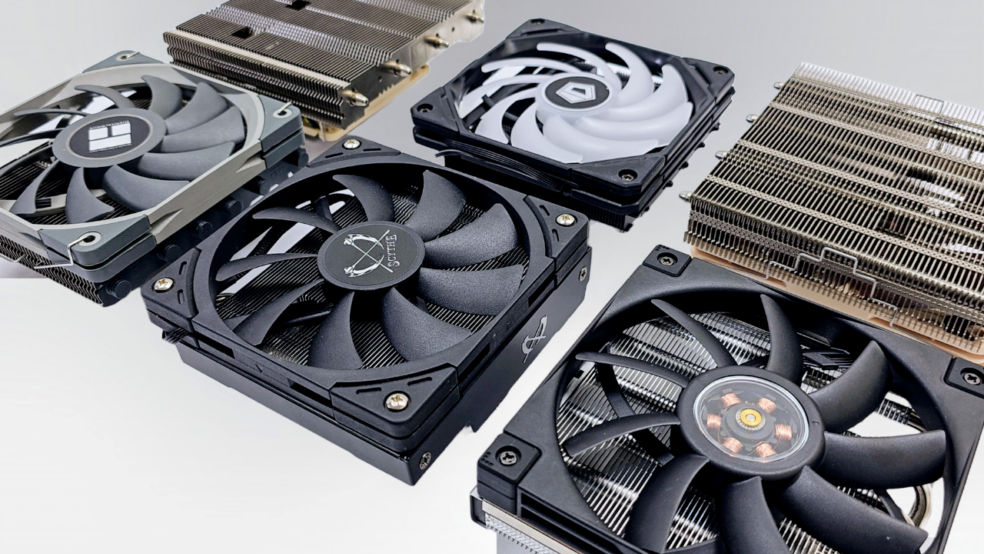We created these CPU cooler comparison mega charts as an easy way to catalogue and compare low profile cooler performance across different CPU and/or platforms. We have also included some tower coolers and AIO liquid coolers for reference.
CPU COOLERS
- NOCTUA NH-L9A (37MM)
- THERMALRIGHT AXP90-X36 (37MM)
- IDCOOLING IS-47-XT (47MM)
- ALPENFOHN BLACK RIDGE (47MM)
- THERMALRIGHT AXP90-X47 FC (47MM)
- THERMALRIGHT AXP90-X53 BLACK (53MM)
- THERMALRIGHT AXP90-X53 FB (53MM)
- IDCOOLING IS-55 (55MM)
- NOCTUA NH-L12 GHOST (66MM)
- SCYTHE BIG SHURIKEN 3 REV.B (67MM)
- DEEPCOOL AN600 (67MM)
- THERMALRIGHT AXP120-X67 (67MM)
- IDCOOLING IS-67-XT (67MM)
- NOCTUA NH-L12S (70MM)
- THERMALRIGHT SI-100 (100MM)
- NOCTUA NH-C14S (115MM)
- NOCTUA NH-U12A CHROMAX (158MM)
- SILVERSTONE VIDA 240 SLIM (240x20MM)
- DEEPCOOL LS520 SE (240X28MM)
- COOLERMASTER ATMOS (240x28MM)
- EK-AIO 280 D-RGB (280x27MM)
TESTING
Testing is carried out on the BC1 Mini (open testbench), in 20°C ambient room temperature. We noise normalise cooler fan speeds to 35dB(A) at distance of 50cm to best of our ability. This helps eliminate brute force cooling from higher RPM fans. If there are any optimisations made to stock CPU performance, these will detailed in individual charts.

We run Cinebench R23 multicore (stability test), for period of 30 minutes. This provides worse case scenario and is consistent for a given CPU. CPU coolers are typically tested across range of CPU’s for data validation and to reduce risk of errors. This helps account for variables between CPUs and/or platforms. We do our best to ensure testing is as consistent as possible. Unfortunately, this isn’t completely fool proof, so please bare that in mind. These results should be used as guidance only.
RYZEN 7 7800X3D
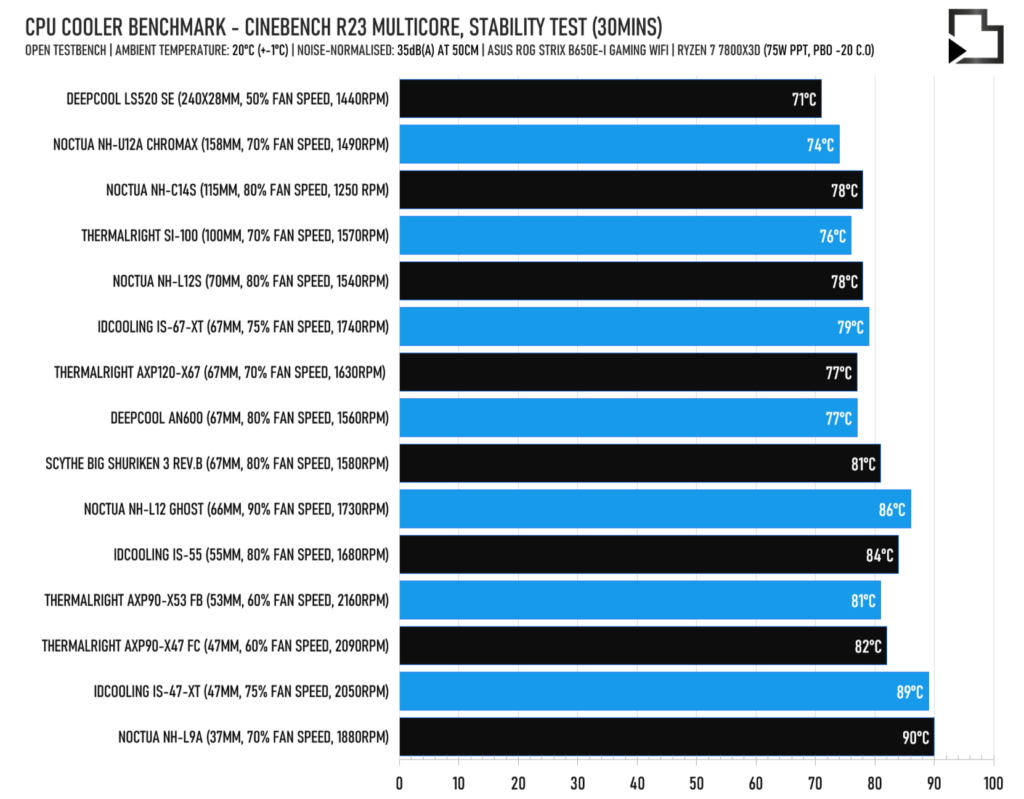
RYZEN 5 7600X
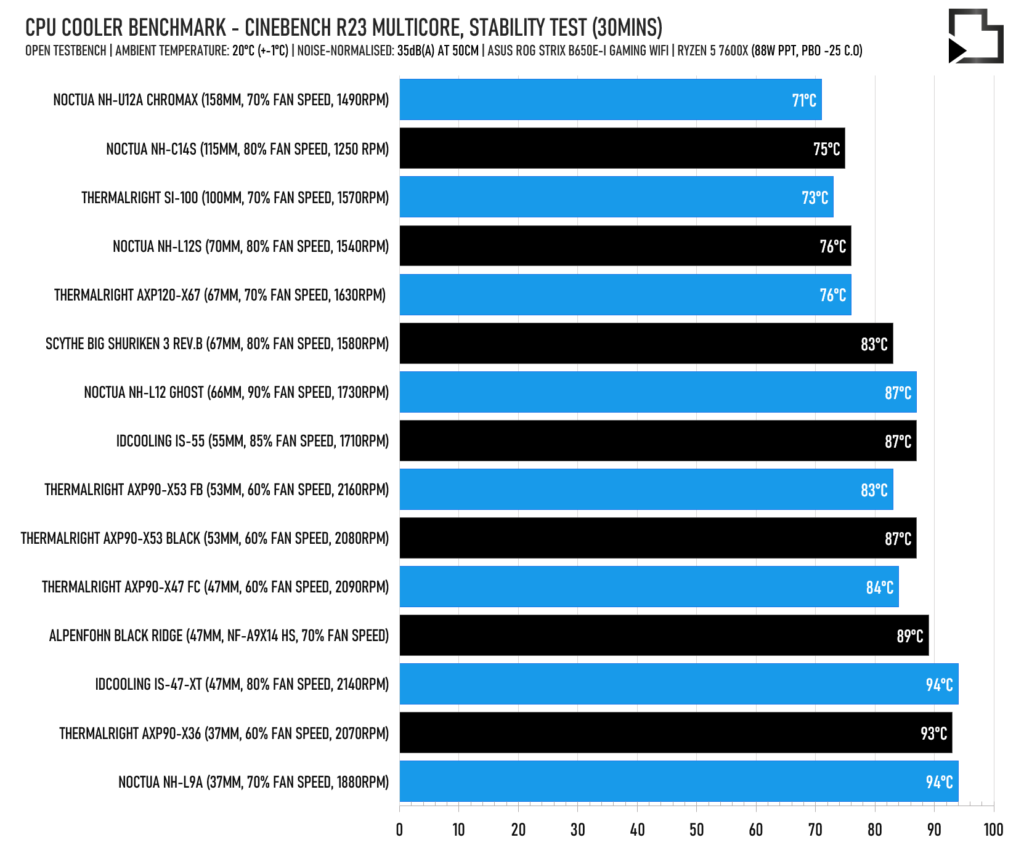
RYZEN 7 7700X
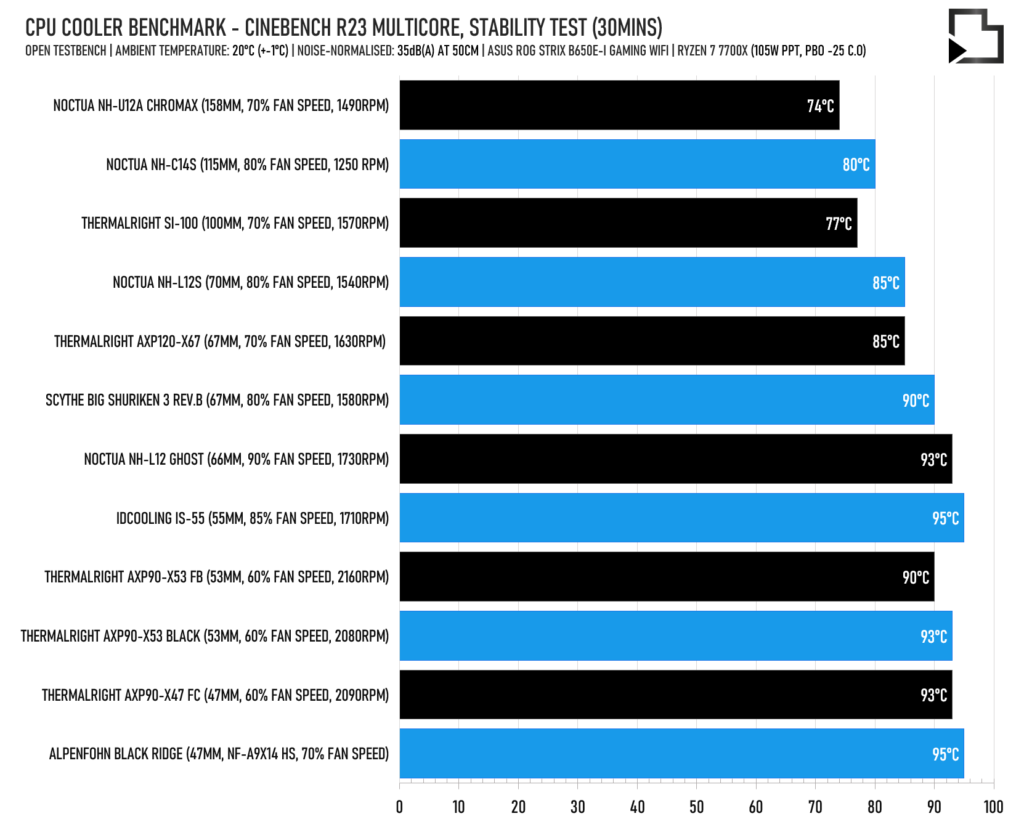
RYZEN 9 7900X
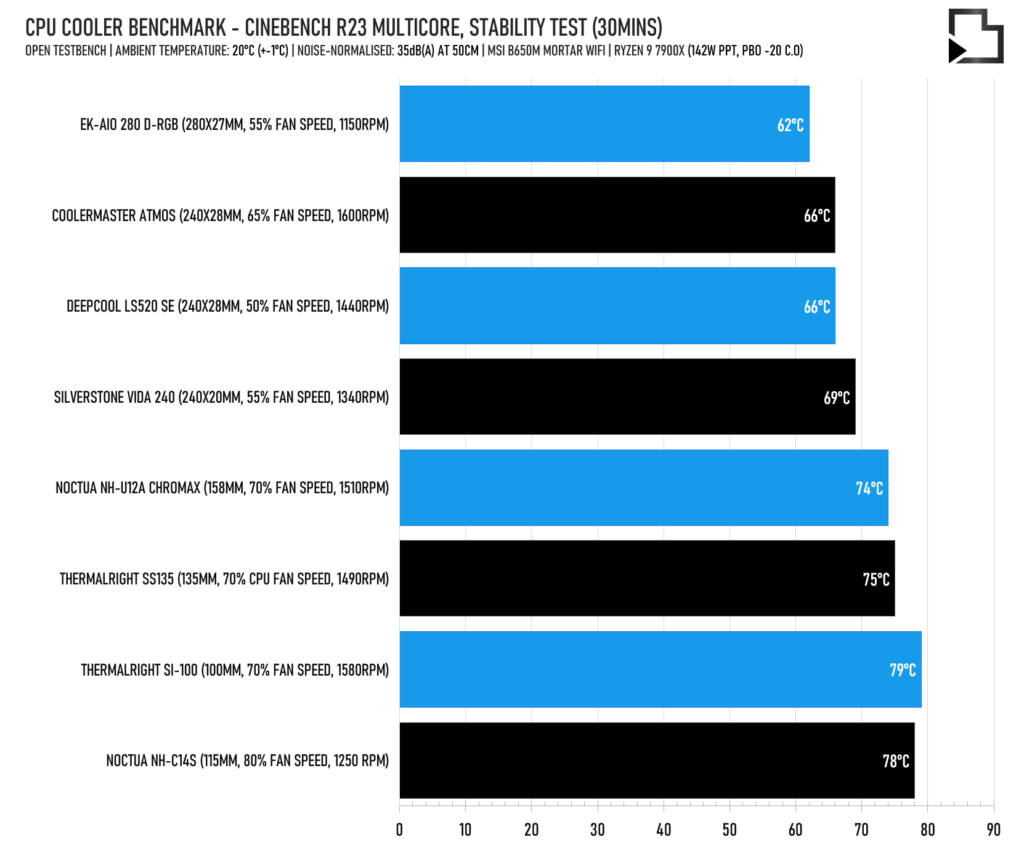
13900K
coming soon…
FAQ’s
- Thermalright AXP90 coolers ”all of them” perform better in one orientation vs. the other. This is particularly important on Intel, as the cooler can be mounted in either orientation. We’ve included an example of the optimal performing orientation below:

- CPU platform can be a factor to consider when choosing CPU cooler. Some CPU coolers may perform differently on Intel vs. AMD. This could be due for die positioning, mounting, or other factors.
- Case, motherboard, GPU installed directly in the PCIe slot, distance from the side panel, and environment are all factors that can impact cooler performance and behaviour. This is also means that one users results may not be directly compatible to another’s, even with same cooler.
- CPU load may affect cooler scaling. The lower the load, the more the lines blur between different performance class coolers. The gaps typically widens at higher loads between coolers of different capabilities or performance levels.
- Gaming thermals for given CPU will typically be substantially lower than multicore temperatures, but this isn’t always true.
- We are not experts, so please take our results for what they are, one users findings, and experiences.

